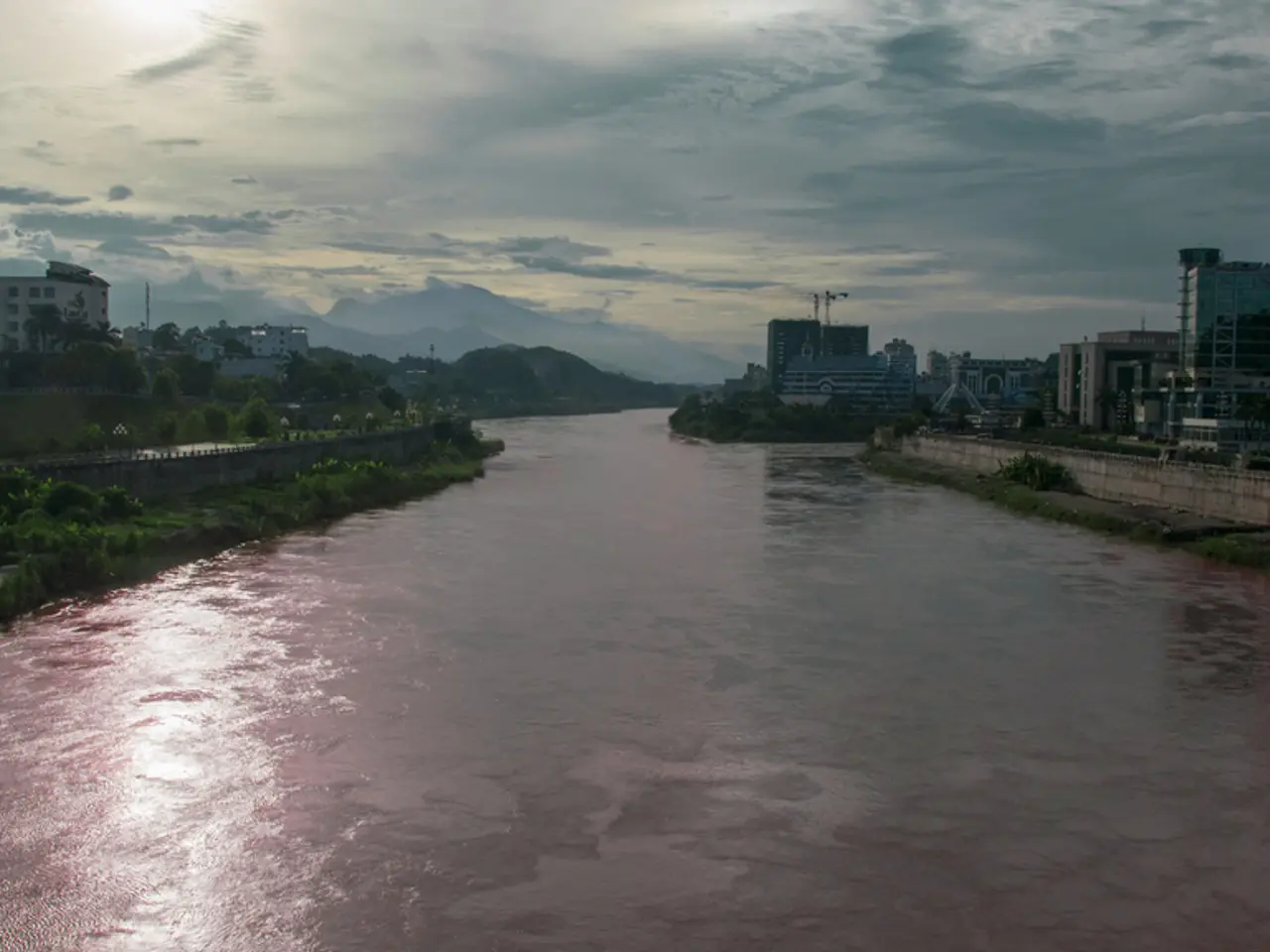Construction Commences on Earth's Most Expensive Hydropower Gigantic Structure, Valued at $167 Billion (China)
In a significant move towards its green and low-carbon energy transition, China has initiated the construction of the Yarlung Tsangpo Megadam, the world's largest hydropower dam, located in the lower reaches of the Yarlung Tsangpo River in the Tibet Autonomous Region. With an estimated financial investment of 1.2 trillion yuan ($167.8 billion), this project is substantially more expensive than the Three Gorges Dam.
The megadam, comprising five cascade hydropower stations, is expected to produce approximately 300 billion kilowatt-hours of electricity annually, almost triple the amount generated by the Three Gorges Dam, currently the world record holder. Much of the electricity from the Yarlung Tsangpo megadam will be delivered to other parts of China beyond Tibet.
However, the construction of the Yarlung Tsangpo megadam presents significant geopolitical and water security concerns for both India and Bangladesh, given its location on a transboundary river system. The Yarlung Tsangpo River becomes the Brahmaputra once it enters India and later flows into Bangladesh. The dam will regulate and store water upstream, which could affect the volume, timing, and seasonality of the river flow essential for agriculture, drinking water, and ecosystems in both countries.
India and Bangladesh depend heavily on the Brahmaputra for water supply. Altered flows could disrupt irrigation, fisheries, hydropower generation, and floodplain fertility downstream, raising fears about water scarcity and food security. The dam amplifies China’s strategic leverage over downstream neighbors by controlling a major shared water resource, potentially exacerbating regional tensions and mistrust.
Environmental risks are also a concern, as the dam construction and reservoir could alter local ecology and sediment transport, affecting downstream environmental health. The project aims to improve the local eco-environmental monitoring network system and promote harmony between humanity and nature.
Several of China's downstream neighbors, including India and Bangladesh, have expressed concern about the construction of the Yarlung Tsangpo megadam and its potential impact on their water security. There is currently limited formal water-sharing or dam operation agreements between China and downstream countries, increasing uncertainty about how water release decisions will be managed during droughts or floods.
Despite these concerns, hydropower is considered a renewable and "clean" energy source that doesn't produce direct air or water pollution. Hydropower plants, like the Yarlung Tsangpo megadam, make use of gravity and the kinetic energy of flowing water to spin turbines and generate electricity.
Climate change is driving more intense droughts and widespread water shortages, potentially leading to the rise of "water conflicts" in which states and militia groups vie for control over access to critical water supplies. In this context, the urgency for diplomatic dialogue to address shared water security and ecological sustainability concerns is evident.
Chinese Premier Li Qiang announced the start of construction on July 19 at a groundbreaking ceremony in Nyingchi City, where part of the hydropower system will run through. As the project progresses, it will be crucial to engage in constructive dialogue to address the concerns of downstream countries and ensure a sustainable and peaceful outcome for all parties involved.
- The Yarlung Tsangpo Megadam, an engineering marvel, is China's significant stride towards climate change mitigation and sustainability, aiming to switch to green and low-carbon energy.
- Located in the Tibet Autonomous Region, this dam, comprising five cascade hydropower stations, is poised to produce 300 billion kilowatt-hours of renewable energy annually.
- This production outstrips the Three Gorges Dam's current record by almost triple, highlighting the project's potential within the energy industry.
- However, the Yarlung Tsangpo River, the Brahmaputra's precursor, flows through India and Bangladesh, raising geopolitical and water security concerns due to its transboundary location.
- The dam's water regulation could disrupt agriculture, drinking water, and ecosystems in these countries, raising questions about water scarcity and food security.
- Environmental science experts also express concerns about the dam's potential impact on local ecology and sediment transport, affecting downstream environmental health.
- Despite these worries, hydropower is deemed a sustainable form of renewable energy that contributes to environmental science by not producing direct air or water pollution.
- Sustainability and self-development enthusiasts might find interest in the Yarlung Tsangpo Megadam as a case study in the intersection of engineering, science, and personal growth.
- Data and cloud computing professionals could also see value in the vast amount of information the dam's operation generates, potentially benefiting the housing market and real-estate investments.
- Simultaneously, sports enthusiasts may bet on the escalating regional tensions and mistrust, while educators can use this situation to teach students about global politics, environment, and the importance of sustainable living.
- In the broader context of climate change, the dam exemplifies the need for environmental-science-based decision-making in renewable-energy projects, aiming for a harmonious coexistence between humanity and nature.
- Finally, the sustainable-living movement encourages businesses to take a holistic, lifestyle-driven approach towards mitigating climate change and ensuring a peaceful, environmentally friendly future for all nations.




